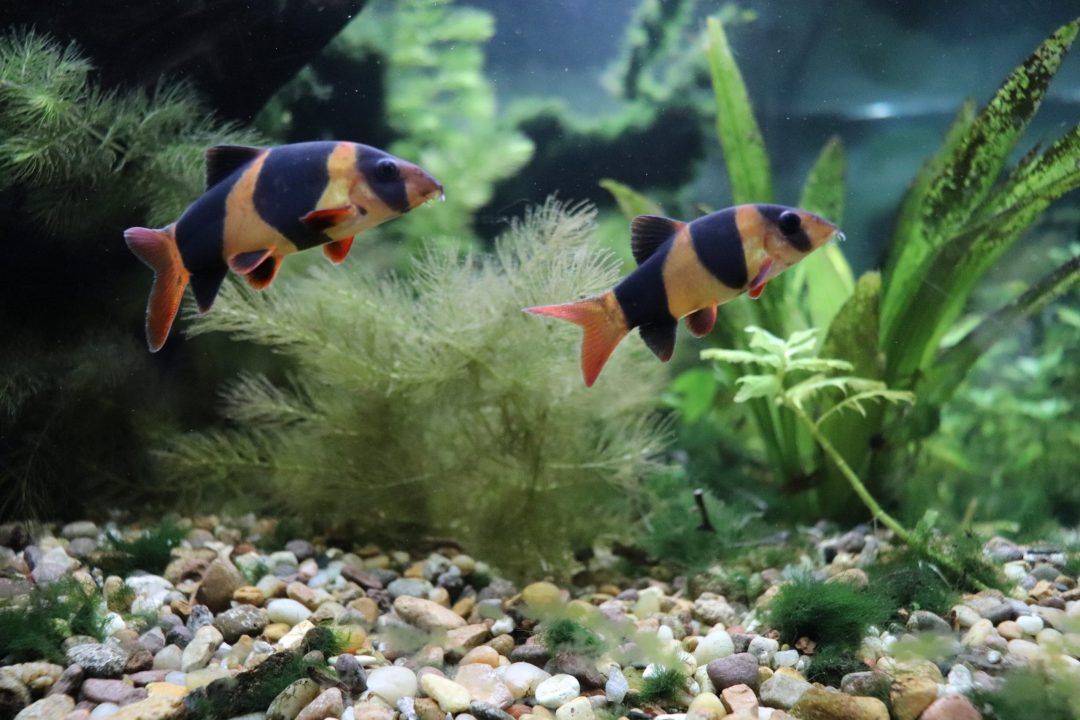Bottom feeders are important for the overall health of a fish tank. These five freshwater fish species are great at algae elimination, snail removal and cleaning food from the bottom of your tank.
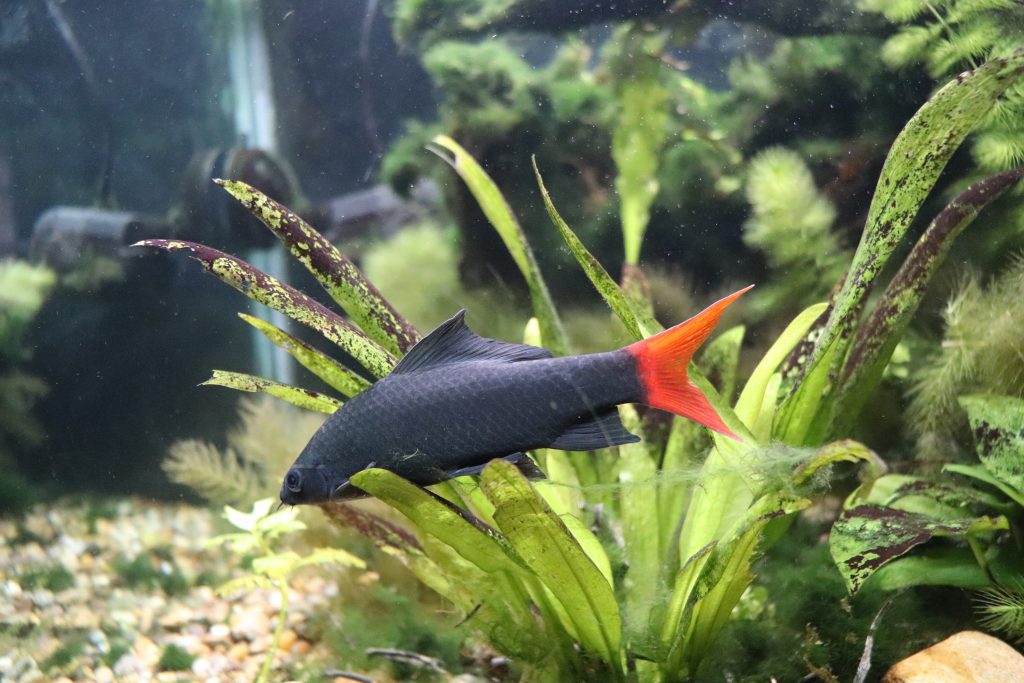
Red-tail black shark or redtail shark
From Thailand, these little jaws are a beautiful addition to any freshwater tank. With a dark body and a bright red tail these bottom feeders will stand out in your tank. While technically a carp, redtail sharks will feast on snails, clean vegetables, algae and most other food that reaches the bottom of your tank. They also love to eat bloodworms and brine shrimp.
When they get older, redtail sharks become more territorial and will chase smaller fish. You should try to pair redtail sharks with hardy fish that occupy the upper levels of aquariums like gouramis or angelfish. You will want to give these little guys plenty of swimming room.
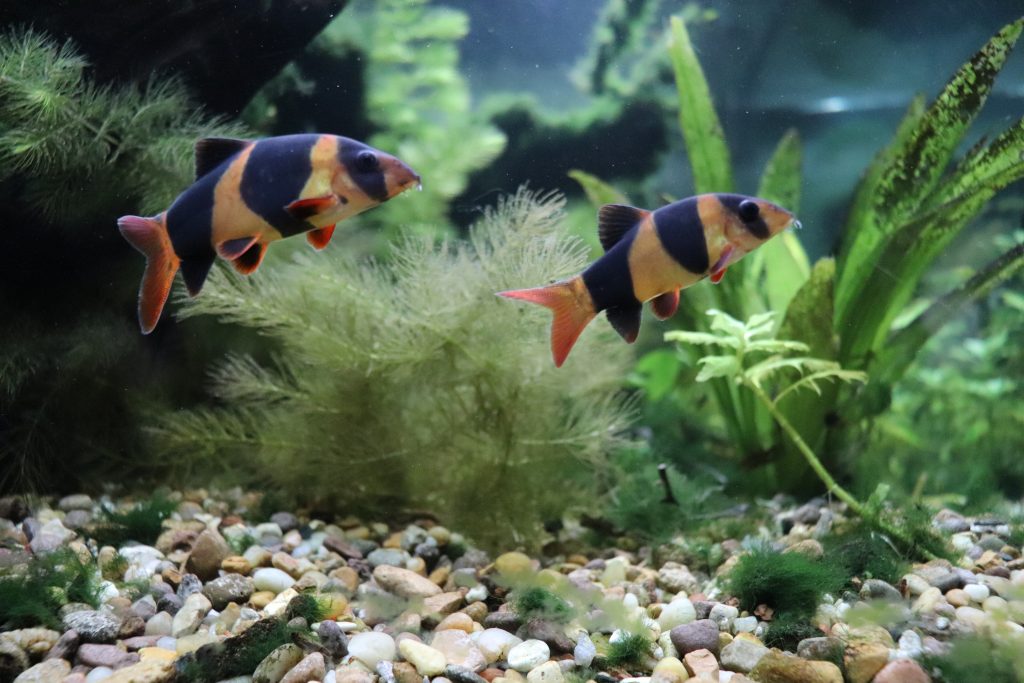
Clown Loach
Originally from Southeastern Asia, the Clown loach is a beautiful addition to any freshwater tank. Don’t let the tiger stripes fool you, this fish gets along with almost any other fish in your tank. Clown loaches are a great community fish allowing you to add many other species to your aquarium. They are very active during the day making them fun and easy to watch. Clown Loaches dine on those small pesky snails making them a very useful addition to your tank.
In the wild, the clown loaches can get to be over a foot long and are eaten as food. However, clown loaches rarely get this big in aquariums and we think they look better in the living room instead of the kitchen.
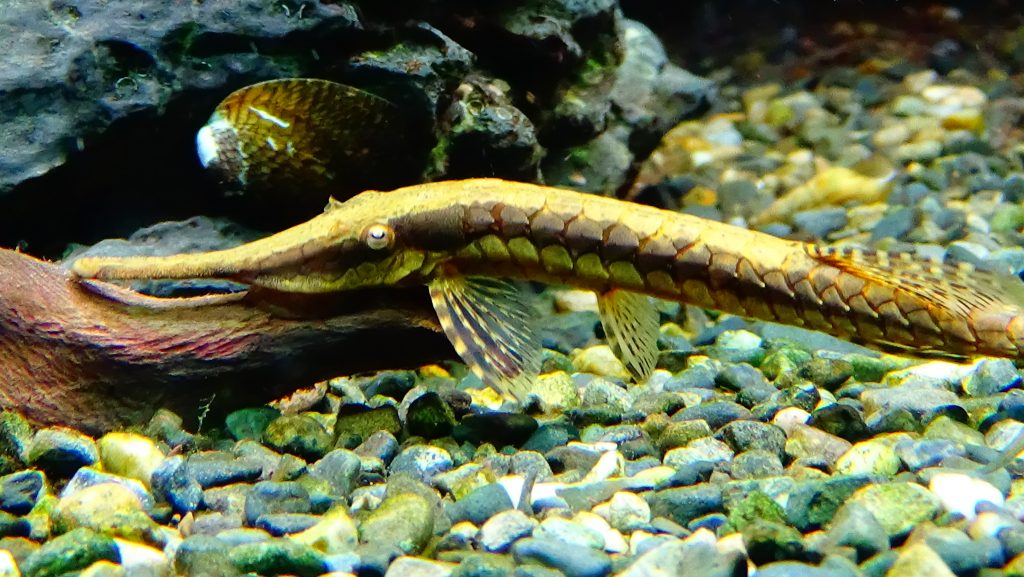
Twig catfish or Whiptail catfish
This armored catfish, from South America, closely resembles a twig. Using its sucker mouth, twig catfish love feeding on algae inside your aquarium. They reach about half a foot in length and love to sit on driftwood and rock formations.
Twig catfish have a peaceful temperament and love a tank with plently of water movement for oxygen. If your tank is free of algae, you can suppliment their diet with bloodworms or other food pellets. However, twig catfish are one of the best algae you can have in your tank.
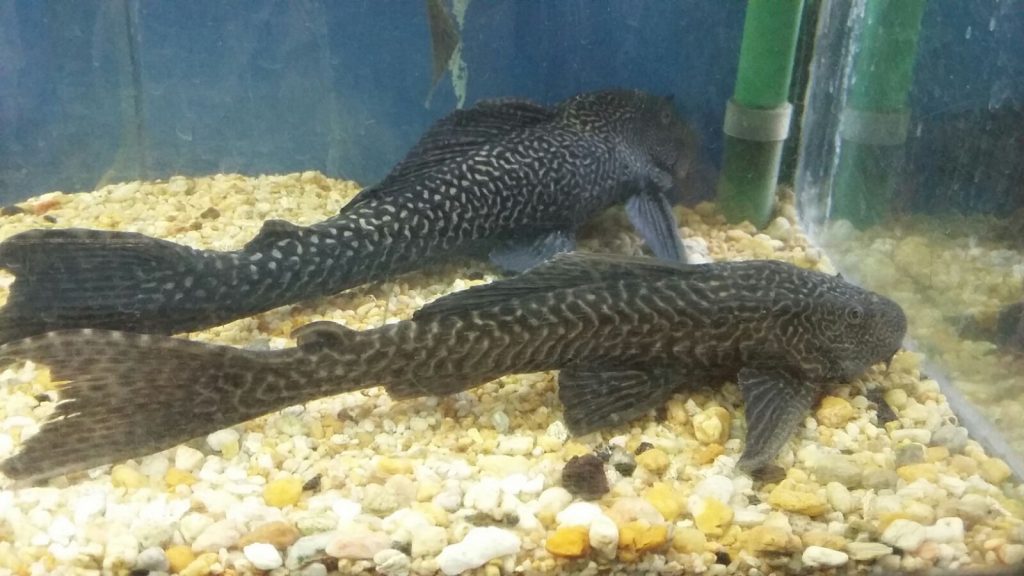
Plecostomus
Native to South and Central America, the plecostomus is another armored, freshwater catfish. Different species feed on a variety of food including: wood, algae, snails, carrion and plants. Be sure you know exactly what type of food to give your specific species. In addition, some species can reach 20 in or 50 cm in length.
You can usually find these fish sucking on the inside glass of your tank. Plecostomus are nocturnal and are normally hiding during the day. They are compatible with most other fish, given they are relatively the same size.
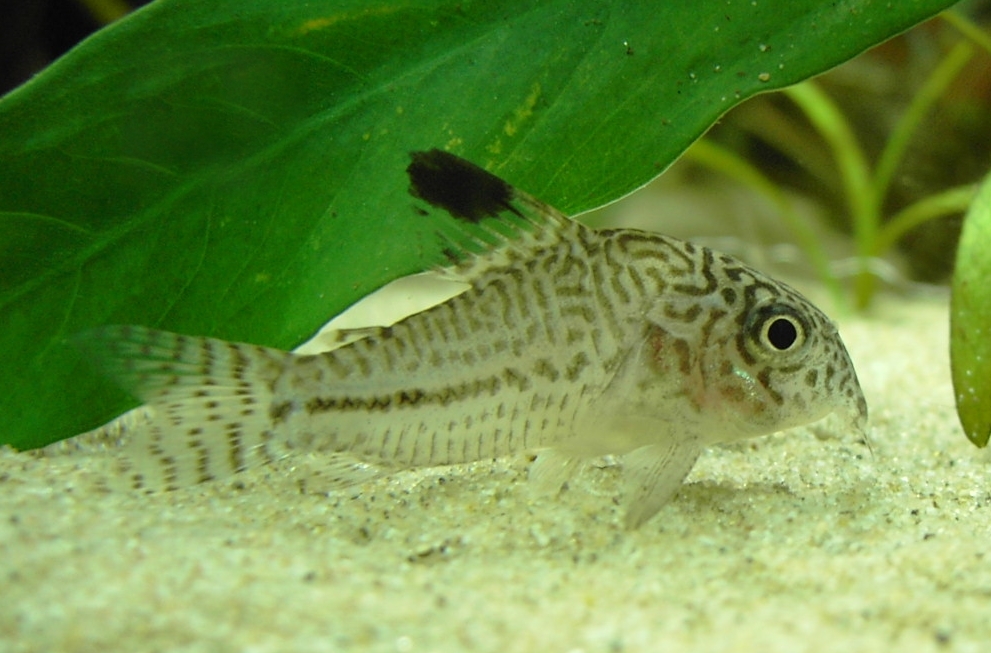
Corydoras
Last but not least, the Corydoras is one of my favorite species of bottom feeders. They get their name from the Greek words kory (helmet) and doras (skin). Corys, as they are commonly known, hail from the rivers of South America. They are a peaceful fish and love to school together. If you get corys, always aim to get at least two or three.
Corys will eat almost anything you give them: insects, worms, plants, pellets, bloodworms, etc. However, corys are not great at algae removal and it should be noted that there is a wide variety of cory species. That being said it is important to know exactly what your species of cory needs to thrive.
Fun fact: the first fish I ever had was a Mosaic Cory.
Bottom feeders are integral in maintaing a healthy tank. While they are sometimes considered an after thought, bottom feeders can have stunning patterns like the species listed above. There’s nothing like catching a flash of red, as a redtail shark catches a pellet of food and scurries back to its lair.
Image sources
Twig Catfish:
Author: Cedricguppy – Loury Cédric / CC BY-SA (https://creativecommons.org/licenses/by-sa/4.0)
Link: https://commons.wikimedia.org/wiki/File:Farlowella_acus_-_AquaPorteDoree_06.JPG
Plecostomus:
Pleco – Lauricdd / CC BY-SA (https://creativecommons.org/licenses/by-sa/4.0)
Link: https://commons.wikimedia.org/wiki/File:PlecostomusAcuexcomatl.jpg
Corydoras:
Author: Buchling / CC BY-SA (http://creativecommons.org/licenses/by-sa/3.0/)
Link: https://commons.wikimedia.org/wiki/File:Corydoras_trilineatus.JPG



